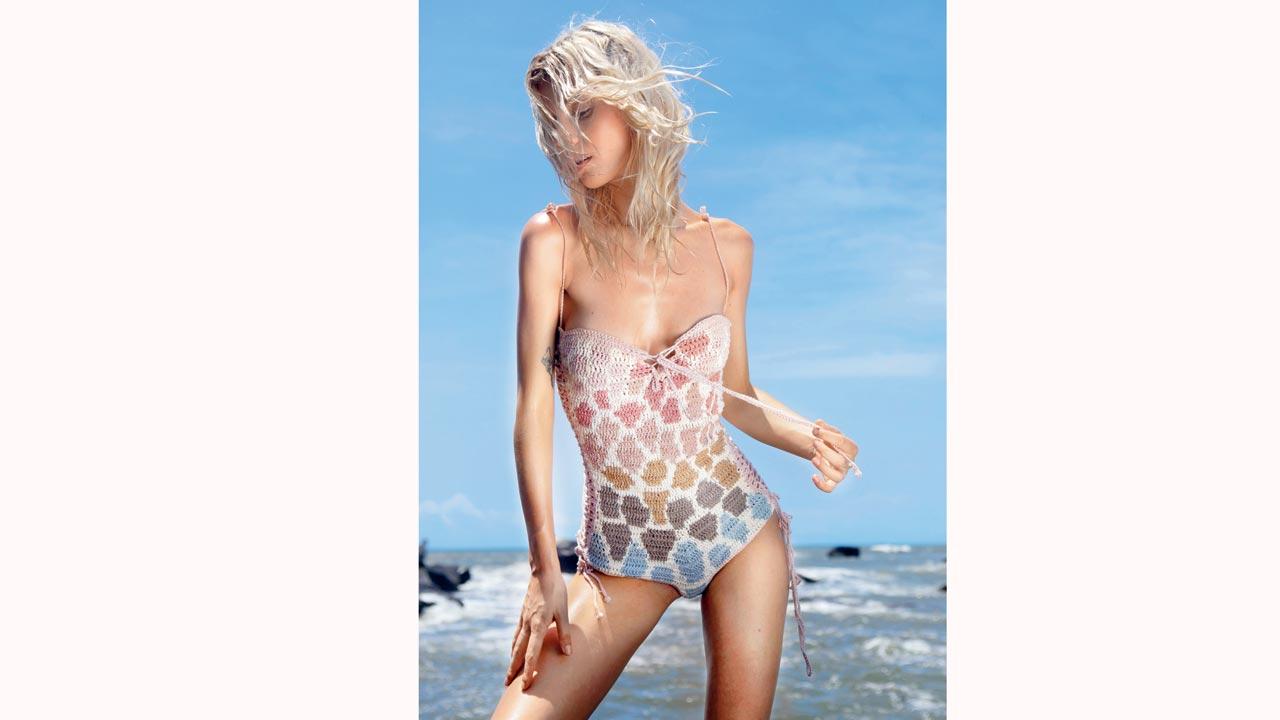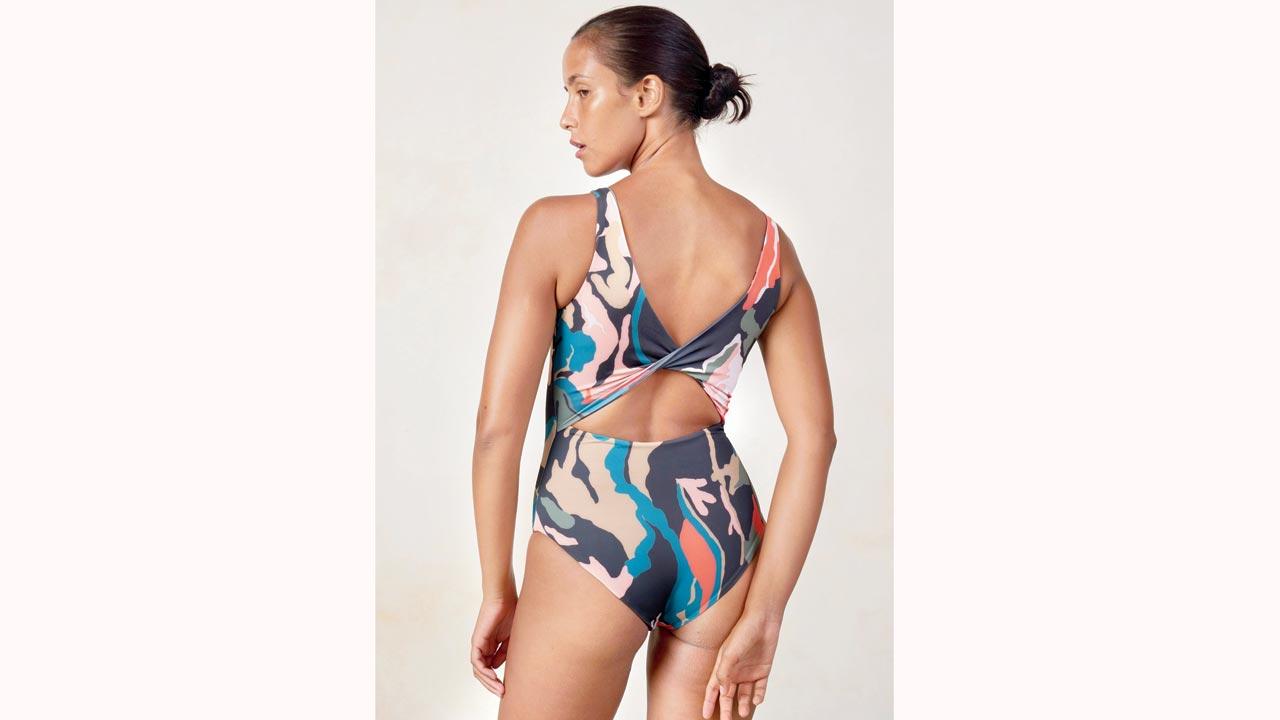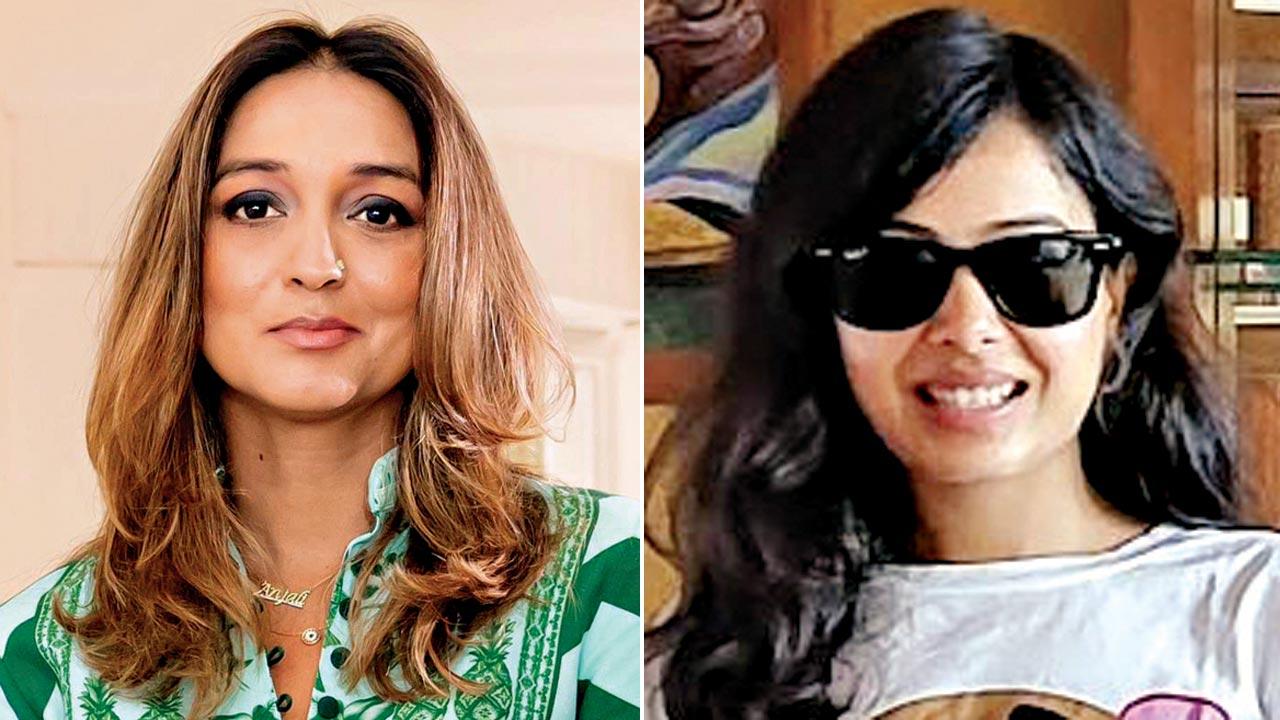With Earth Day tomorrow and a heatwave upon us, it’s an opportunity to dive deep into how swimwear brands are addressing climate change

One-shoulder rosette top and reversible high-waisted bottoms; (right) rosette maillot from Verandah’s Anjuna collection. Anjali Patel Mehta, who made North Goa her home during the pandemic, opened her brand’s first store in a 16th century Portuguese home at Mazzal Vaddo
 This January, Anjali Patel Mehta, founder-designer of luxury resort and swimwear brand Verandah, achieved a significant milestone. She became the first Indian fashion entrepreneur to receive the prestigious Butterfly Mark certification, joining a global community of brands like Louis Vuitton, Christian Dior, Tom Ford Beauty, La Perla Beauty and Anya Hindmarch.
This January, Anjali Patel Mehta, founder-designer of luxury resort and swimwear brand Verandah, achieved a significant milestone. She became the first Indian fashion entrepreneur to receive the prestigious Butterfly Mark certification, joining a global community of brands like Louis Vuitton, Christian Dior, Tom Ford Beauty, La Perla Beauty and Anya Hindmarch.
ADVERTISEMENT
In 2017, Mehta was approached by Positive Luxury to participate in the assessment for the Mark. This certification programme, designed by the leading sustainability experts in London for the global luxury industry, tells a brand’s sustainability story by revealing its social, environmental and philanthropic efforts on their website. Using their proprietary Butterfly Methodology, which includes ESG (environmental, social and governance) assessment, risk mapping and certification verification, brands strive to exceed minimum sustainable standards set by local and international laws.
 Hand knitted and dyed by women artisans, La Paz’s crochet swimsuit took seven days to create. Its front tie detail allows for versatile styling options
Hand knitted and dyed by women artisans, La Paz’s crochet swimsuit took seven days to create. Its front tie detail allows for versatile styling options
“Transparency is key. When it comes to sustainability, it is not just about ethics; it is about economics too. Getting certified has shown us that sustainable branding needs more than just tugging at heartstrings; it needs a practical data-driven approach,” Mehta tells mid-day. After paying a nominal fee and signing up for the assessment, the process began with testing fabric for biodegradability, verifying sustainable yarn usage, and confirming supplier and vendor sustainability claims. It also involved last-mile reporting, carbon-neutral shipping offsets, and monthly water, energy and municipal waste management bills. Photographic evidence and physical certifications were also required to substantiate the claims.
Through her brand, Mehta supports the Baagh Pari project, promoting Moghiya tribal girls’ education in Ranthambore via a CSR partnership with NGO Tiger Watch, alongside Sankalptaru. Mehta personally designs and supervises collections at her Lower Parel studio in Mumbai, and works with regenerated and biodegradable yarns (Ecovero, Econyl, Bemberg and Lenzing) and GOTS certified organic cotton. “We partner with one of Asia’s most sustainable apparel manufacturing factories in Coimbatore for production,” she says. “I prefer using the term ‘conscious’ rather than ‘sustainable’.”
 The Summer House’s scoop neck swimsuit with twisted back details, crafted from Econyl, comprises 78 per cent polyamide and 22 per cent elastane, with the lining made of 83 per cent recycled polyamide and 17 per cent elastane. Elastane, the primary component in swimwear, sculpts and contours the body
The Summer House’s scoop neck swimsuit with twisted back details, crafted from Econyl, comprises 78 per cent polyamide and 22 per cent elastane, with the lining made of 83 per cent recycled polyamide and 17 per cent elastane. Elastane, the primary component in swimwear, sculpts and contours the body
Mehta isn’t alone in this sentiment. Brands cannot rely solely on attaching labels to their actions; they must clearly define and back up those labels. Shivangini Padhiyar, founder-creative director of The Summer House (TSH), argues that much of what we currently label as “sustainable swimwear” is contradictory. She suggests redirecting the conversation towards “mindful” instead.
The sustainability paradox of swimwear stems from its use of plastic-based synthetic fabrics like nylon, polyester and spandex that make it waterproof. While the fabrics provide practical benefits like moisture-wicking, flexibility and elasticity, they also present the risk of shedding microplastics into the water, contributing to a fraction of the annual waste of 13 million metric tons. “Ultimately, the burden should not lie solely on the customer; brands need to step up and do better,” she says.
 Anjali Patel Mehta and Radhika Agarwal Yadav
Anjali Patel Mehta and Radhika Agarwal Yadav
Established in 2015, the Bengaluru-based brand dedicated to “life’s little joys” understands that sustainability in the fashion industry extends beyond fabric choices. TSH operates with a compact team of 13 members, including nine tailors who cut and sew at their Jayanagar studio. This setup enables Padhiyar to oversee product quality and contribute to the brand’s efforts to reduce carbon footprint.
Swimwear was introduced to the brand’s inventory within two years of its launch, seen as a logical expansion. “Our annual drop spans both summer and Christmas seasons, featuring three colours and styles [one-piece, bikini tops and high and low-waisted bottoms, and boy shorts] tailored to suit Indian women’s skin tones and body types, ensuring ample hip and cleavage coverage. We originally sold sets, but now provide individual pieces to cater to evolving customer preferences,” explains Padhiyar.
TSH was among the first to embrace Econyl, a regenerated nylon sourced from waste such as old carpets and fishing nets. Additionally, it uses AZO free GOTS-certified (global organic textile standard) dyes for prints and packages its pieces in organic cotton drawstring bags. Swimwear made from regenerated materials typically uses fewer resources than virgin nylon. The brand fosters circularity through schemes like ReLove on their e-commerce site, allowing customers to buy and sell verified, pre-loved swimwear from the brand. “A woman experiences a minimum of 33 body changes from birth to death; her tastes can shift, and personality can evolve. Swimsuits, with clearly outlined usage history, can seamlessly transition from seller to buyer,” Padhiyar says.
Statista reports that India’s sports and swimwear market revenue totals US$2.17 billion for 2024, with an estimated annual growth rate of 3.50 per cent (CAGR 2024-2028). Globally, the US leads with swimwear segment revenue projected to hit US$25.2 billion in 2032.
“Swimwear is a relatively new category in India, representing a niche market segment,” says Radhika Agarwal Yadav who founded La Paz with her environment consultant husband, Anshul Yadav, in May 2023. The “conscious” swimwear and resort label takes its name from the Mexican state on the Baja California Peninsula, where the couple had memorable experiences, including swimming with whale sharks.
The Gurgaon-based label flexes its eco-credentials with reversible swimwear, aimed at reducing throwaway fashion. Their haute-hippie bikini tops feature drawstring straps for easy styling adjustments.
“We work exclusively with Econyl, with the Italian-made fabric shipped directly to an Indonesian factory,” Yadav says. She stresses their commitment to partnering with labour law-compliant factories while highlighting the challenges she faced within the Indian manufacturing landscape. “India is a game of bulk, which leaves little room for small entrepreneurs and brands like mine,” she explains. “Our typical annual output of 285 units, roughly six pieces per size, often gets overshadowed by large-scale orders.”
Yadav finds inspiration in Natasha Tonic, a LA-based swimwear brand known for its inventive use of hemp-cotton blends and 4 per cent Lycra in tie-dye and cutaway designs. “It is a challenge to find materials that aren’t derived from fossil fuels, yet offer sleekness, quick drying and shape retention without a hefty price tag,” she reasons. “Educating the customer is crucial in India; for example, our packaging materials are made from corn starch that easily dissolves in water after delivery.”
How to buy and keep swimsuits in great shape
. Invest time in researching different materials before making a purchase. Be sure to read the label’s composition and consider where it’s made, how it’s made and who made it.
. Remember, post-purchase care is just as crucial and entirely within your control.
. Resist the temptation to lazily wrap your wetsuit in a towel and forget about it. It is important to promptly rinse off the salt and chlorine from your swimsuit to prevent sagging caused by damaged fibre.
. To maintain your swimwear’s shape, avoid wringing, as this can damage the fibres. Instead, opt for hang drying.
. Direct sunlight or high heat can cause the fabric to fade over time.
. While wetsuits are naturally sweat resistant, be cautious when using sunscreen and tanning products, as they can stain your swimsuit.
. Hand-wash in cold water. Spin cycles in washing machines can release microfibres into our oceans, making hand washing an ethical choice.
. Avoid tumble drying, ironing or dry cleaning your swimsuit.
 Subscribe today by clicking the link and stay updated with the latest news!" Click here!
Subscribe today by clicking the link and stay updated with the latest news!" Click here!







